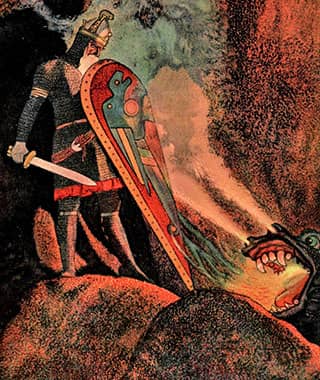Course Description
This course is an intensive introduction to Old English (also called Anglo-Saxon), the ancestor of modern English that was spoken in England ca. 600–1100. In the first half of the term, students use short prose texts to study the basics of Old English grammar. They go on to read short poems, and conclude by tackling …
This course is an intensive introduction to Old English (also called Anglo-Saxon), the ancestor of modern English that was spoken in England ca. 600–1100. In the first half of the term, students use short prose texts to study the basics of Old English grammar. They go on to read short poems, and conclude by tackling portions of the epic Beowulf in the last third of the term. Assessment is based upon translation work, daily vocabulary quizzes, and three exams.
Course Info
Instructor
Departments
Learning Resource Types
Instructor Insights
Readings
theaters
Lecture Videos
grading
Exams with Solutions

Beowulf Face to Face with the Fire-breathing Dragon. Image taken from the book Myths and Legends of All Nations; Famous Stories from the Greek, German, English, Spanish, Scandinavian, Danish, French, Russian, Bohemian, Italian and Other Sources (1914) by Logan Marshall. (This image is in the public domain. Source: Wikimedia Commons.)










